Installing Windows on an Xbox One APU: The Chuwi Aerobox Review
by Dr. Ian Cutress on December 24, 2020 9:45 AM ESTChuwi Aerobox: Under The Hood
When first taking it out of the box we’re presented with a very yin/yang console design, one half being black and the other half being white. Chuwi has designed the system with triangles in mind it seems, with a cut out in the corner and styling on the front.
The system is designed to either lay horizontal, or can be enabled vertically with the supplied stand bundled in the box. In the vertical position, the air intake is through the vent seen below, and exhausted out of the bottom of the chassis. The stand provides some clearance to enable this, and it is recommended that the stand is not used on carpet.
Picking up the chassis for the first time, I noticed it was very unbalanced in weight, with one side having more than the other. This is thankfully the side where the stand can be attached, as there is only one mounting point for it. The chassis is very much a plastic design, alike the consoles, except this doesn’t have an internal metallic like-shell for extra structural strength. Without feeling the weight of the unit (1.4 kg, ~3.1 lbs), you would be forgiven for thinking it is hollow.
For connectivity, all the ports are on the rear of the device. This is somewhat annoying personally, as for a machine like this (whether used in an office space or as a home theatre/gaming machine) at least one port on the front to plug in storage, a mouse/keyboard, or a controller would be a good thing.
On the rear we have separate PS/2 ports for a mouse and keyboard, a DVI-D video output, four USB 2.0 ports, two USB 3.0 ports, gigabit Ethernet, three audio jacks, and the power connector. For additional connectivity, an 802.11ac 1x1 Intel AC3165 is used with internal antennas. Bundled in the Chuwi box is a (short) DVI-D to HDMI connector, which kind of gets around the fact that this system doesn’t have HDMI. The power barrel is somewhat oddly sized, and the power brick seems large.
The Huntkey power supply provides the 19V DC input, at 7.9 A, indicating a peak power of 150 W. This is about right for this system, which shows around 105 W at boot, 65 W at idle, 85 W at full CPU load, and ~150W during Borderlands 3.
Getting inside the system requires removing four small screws, and sliding the white panel off. As I slid the panel off to get inside (as anyone would to administer upgrades), the power button fell out as it wasn’t properly attached to the system. At the same time, the power contact off the motherboard that the button activates, along with the power LED, also disconnected and actually broke away. I wasn’t in any way being aggressive with opening the system, however something seems to have gone wrong either at quality validation or shipping.
Inside the system we are greeted with what looks like a substantial cooling system, with a blower fan style exhausted and multiple heatpipes. This actually forms most of the weight of the system, and to Chuwi’s credit, is almost whisper quiet even during high loading and high thermal scenarios. The only time the fan wasn’t whisper quiet was during a separate issue with the booting sequence, and at 100% fan it is loud. But Chuwi’s fan curve seems to keep it near silent across any workload.
On the left is a 2.5-inch drive bay for a user to add extra storage, and Chuwi has actually provided the SATA data cable and additional SATA power connector in order to do so. That’s a small touch I quite like. The 19 V DC input for power is this thing on the bottom, connected to the 24-pin power connector.
It provides the board with power, an additional 8-pin CPU connector, and an extra SATA power for storage. It can get quite warm during use.
On the right we see two SATA ports (compared to the non-Chuwi version, which has four), two additional internal USB 2.0 headers, and a TPM header, likely for Chuwi’s commercial customers. There is a small chipset heatsink, an M.2-2280 slot for a SATA SSD, and an M.2 Wi-Fi slot just above it.
This is the SSD that came preinstalled – it’s a simple budget 256 GB SATA SSD. At least it is an SSD at any rate!
The Wi-Fi module wasn’t so carefully chosen. Intel’s AC3165 is essentially the cheapest 802.11ac 1x1 solution in the market, and it performed rather well, but rather than spend an extra tenth of a cent on a screw to fix it to the motherboard in its designated hole, For whatever reason it was glued in with a fresh dollop of adhesive, or what might colloquially be known in electrical engineering as hot snot.
So now we get to the processor and what lies underneath the massive heatsink.
If your first reaction to this is one of disgust, then don’t look at this next photo.
Never in my time as a hardware reviewer have I seen such a poor job with thermal paste on a commercial system. Chuwi gets bonus points as this looks like a good silver based paste rather than silicone, but then loses them all as it is likely very conductive and is shorting out all the capacitor pins on the top of the APU. Someone has gone in and said ‘we need to use a minimum of’ and specified a weight of thermal paste (presumably in kilos), regardless of whether it is actually useful or not. I mean, I could enumerate the ways in which this is horrendously bad for Chuwi, but they’re a big enough company, they should know this.
Suffice to say, I had to clean it up. This was perhaps one of the longest thermal paste removals I’ve ever done. It’s time for a montage.
Music provided royalty-free by Orion Williams
After the process was done, I posted about this on Twitter. It was suggested I could have perhaps also used an old toothbrush to help. But here’s the end result.
I replaced the paste with our trusty Noctua NT-H2, reapplied the heatsink, and scored good lower temperatures. Previously when the system would achieve 75ºC (full sustained load, but still top frequency), I was now seeing 62-68ºC.
BIOS
Users familiar with newer UEFI systems will be used to a fully graphical interface. Chuwi keeps the system basic with the default black and blue system. There isn’t much to do in the BIOS here; Chuwi set the frequency to 2.35 GHz at all times, there are no fan controls, and the most the user can do is adjust the boot order.
This system does technically have a PCIe slot, so if a user wanted to have a different chassis, then the integrated graphics can be changed. Chuwi has the integrated graphics set as the forced graphics mode, with the maximum frame buffer size.


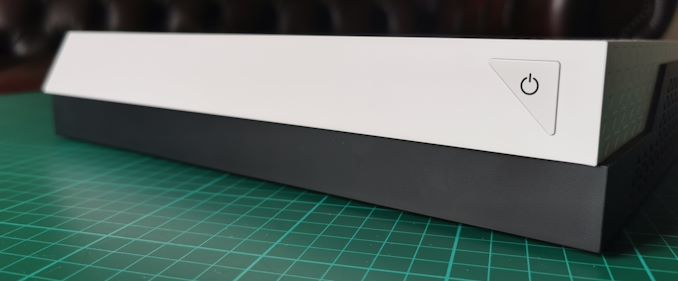
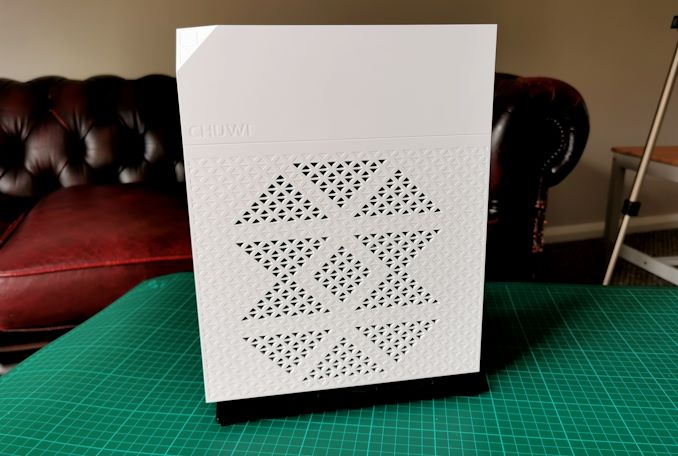






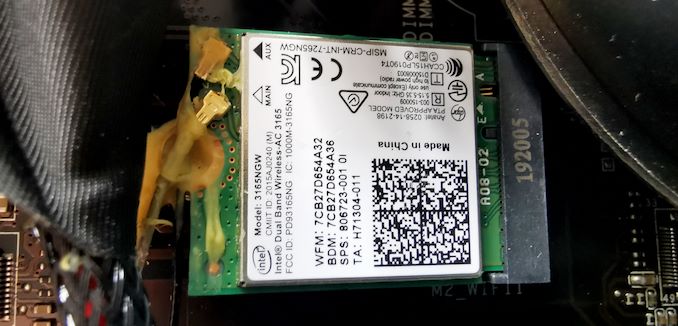

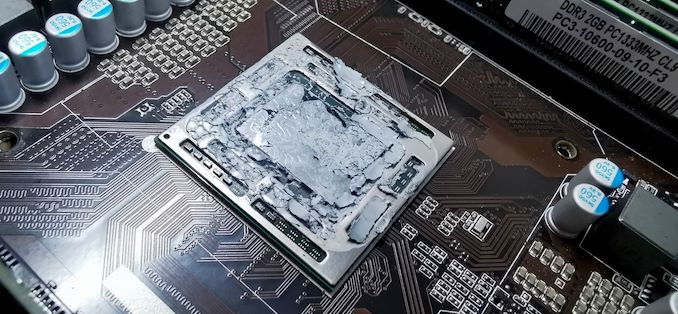
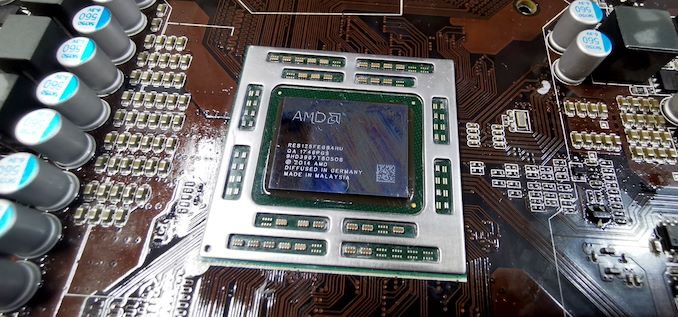
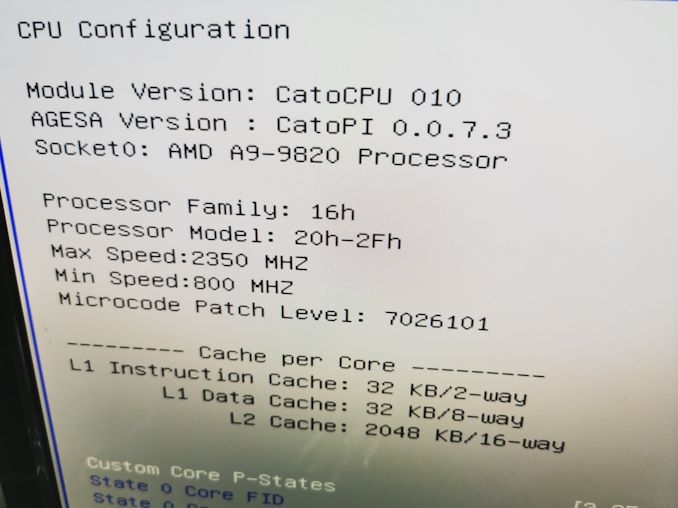
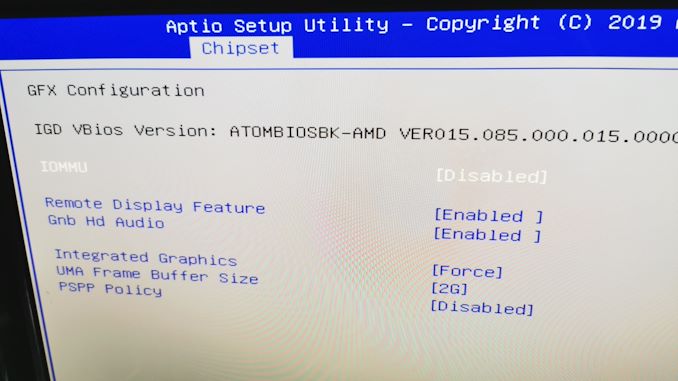








101 Comments
View All Comments
azfacea - Thursday, December 24, 2020 - link
sounds like a solution w/- a problem. much more expensive than raspberry pi and other SBC for pretty much all things CPU . I guess it has more GPU but also way higher power and the GPU is nothing amazing in 2020. so whats the point ??Fulljack - Thursday, December 24, 2020 - link
it's literally for a niche market in Japan as the article has been statedbrucethemoose - Thursday, December 24, 2020 - link
Can y'all run some GPU compute benches?This could potentially be used as a nice budget renderfarm board, especially if the framebuffer can be bumped up. Also, I bet CPU <-> GPU transfers are pretty fast.
Glock24 - Thursday, December 24, 2020 - link
Can it use higher clocked DDR3 RAM? For example DDR3-1866?MrCommunistGen - Friday, December 25, 2020 - link
Yeah, I'd be really interested to see if performance increases appreciably using some faster RAM.I only have experience with two AMD APUs from this era, but both are in prebuilt system scavenged from my company's eWaste pile:
1. A cheapo Acer tower with an A10-7800 (Kaveri) which heavily throttles the CPU cores if there is any 3D load -- causing a CPU bottleneck in many cases. It shipped with DDR3-1600. I bought some Crucial JDEC spec'd DDR3L-1866 (no XMP profile required) to see if that'd help at all, but the system seems to be capped to 1600MHz despite the A10-7800 supporting DDR3-2133.
2. An even more cheapo HP "tower" which ended up being an empty box with an external power brick and a mobile A8-6410 (Beema) on an ITX motherboard. Despite Beema officially supporting DDR3L-1866, this machine is also capped to 1600MHz.
All of this is to say, I wouldn't at all be surprised that even if you paired the A9-9820 with faster DDR3 sticks it might not actually run at higher memory speeds.
boozed - Thursday, December 24, 2020 - link
Apologies in advance...RRRAARRWHHGWWR!
Bigos - Thursday, December 24, 2020 - link
Does it run Linux?abufrejoval - Thursday, December 24, 2020 - link
Android x86 should be fun to try!Oxford Guy - Thursday, December 24, 2020 - link
'Why console processors have never made it into the PC market before'?Because Jaguar has worse IPC than even Piledriver, right?
'At the time AMD had two CPU core designs that were worth some merit: Bulldozer cores, with its 1 core/2 backend design that has since been branded a large dumpster fire for the company, or Jaguar cores, aimed more for the low power/high efficiency market. Weighing in the performance target of this generation of consoles, both companies decided on having eight Jaguar cores.'
Or Jaguar cores, aimed at making more money for AMD because the die size is smaller -- not because the CPU is any better than Piledriver. On the contrary.
The parasitic 'consoles' drained life out of PC gaming with these terrible cores. There is no good reason to have two artificial x86 walled gardens in addition to the PC gaming platform. Yes, there are reasons but none of them outweigh the cost, from the point of view of the consumer rather than companies like Sony, MS, and AMD.
These "consoles" actually put AMD in the position of competing against the PC gaming platform. So much for the common unjustified belief that AMD is some kind of white knight on a horse, fighting the good fight for the PC gamer. Instead, the company was content to feed us Polaris, a weak design from the start designed to make money by keeping die size small, and lame GPUs like Radeon VI. The transistor count in that one is nothing to write home about. All the marveling about how much performance AMD has been able to get on 7nm since then generally neglects to mention that Radeon VI was not a high-performance design in the first place.
Alistair - Thursday, December 24, 2020 - link
Polaris is one of the best GPUs ever made. Relax. The CPU might have been bad but the GPUs in the PS4 and later Polaris were both great.